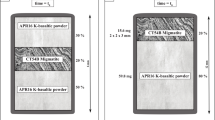Abstract.
U-Pb isotopic thermochronometry of rutile, apatite and titanite from kimberlite-borne lower crustal granulite xenoliths has been used to constrain the thermal evolution of Archean cratonic and Proterozoic off-craton continental lithosphere beneath southern Africa. The relatively low closure temperature of the U-Pb rutile thermochronometer (~400–450 °C) allows its use as a particularly sensitive recorder of the establishment of "cratonic" lithospheric geotherms, as well as subsequent thermal perturbations to the lithosphere. Contrasting lower crustal thermal histories are revealed between intracratonic and craton margin regions. Discordant Proterozoic (1.8 to 1.0 Ga) rutile ages in Archean (2.9 to 2.7 Ga) granulites from within the craton are indicative of isotopic resetting by marginal orogenic thermal perturbations influencing the deep crust of the cratonic nucleus. In Proterozoic (1.1 to 1.0 Ga) granulite xenoliths from the craton-bounding orogenic belts, rutiles define discordia arrays with Neoproterozoic (0.8 to 0.6 Ga) upper intercepts and lower intercepts equivalent to Mesozoic exhumation upon kimberlite entrainment. In combination with coexisting titanite and apatite dates, these results are interpreted as a record of postorogenic cooling at an integrated rate of approximately 1 °C/Ma, and subsequent variable Pb loss in the apatite and rutile systems during a Mesozoic thermal perturbation to the deep lithosphere. Closure of the rutile thermochronometer signals temperatures of ≤450 °C in the lower crust during attainment of cratonic lithospheric conductive geotherms, and such closure in the examined portions of the "off-craton" Proterozoic domains of southern Africa indicates that their lithospheric thermal profiles were essentially cratonic from the Neoproterozoic through to the Late Jurassic. These results suggest similar lithospheric thickness and potential for diamond stability beneath both Proterozoic and Archean domains of southern Africa. Subsequent partial resetting of U-Pb rutile and apatite systematics in the cratonic margin lower crust records a transient Mesozoic thermal modification of the lithosphere, and modeling of the diffusive Pb loss from lower crustal rutile constrains the temperature and duration of Mesozoic heating to ≤550 °C for ≥50 ka. This result indicates that the thermal perturbation is not simply a kimberlite-related magmatic phenomenon, but is rather a more protracted manifestation of lithospheric heating, likely related to mantle upwelling and rifting of Gondwana during the Late Jurassic to Cretaceous. The manifestation of this thermal pulse in the lower crust is spatially and temporally correlated with anomalously elevated and/or kinked Cretaceous mantle paleogeotherms, and evidence for metasomatic modification in cratonic mantle peridotite suites. It is argued that most of the geographic differences in lithospheric thermal structure inferred from mantle xenolith thermobarometry are likewise due to the heterogeneous propagation of this broad upper mantle thermal anomaly. The differential manifestation of heating between cratonic margin and cratonic interior indicates the importance of advective heat transport along pre-existing lithosphere-scale discontinuities. Within this model, kimberlite magmatism was a similarly complex, space- and time-dependent response to Late Mesozoic lithospheric thermal perturbation.
Similar content being viewed by others
Author information
Authors and Affiliations
Additional information
Electronic Publication
Rights and permissions
About this article
Cite this article
Schmitz, M.D., Bowring, S.A. Constraints on the thermal evolution of continental lithosphere from U-Pb accessory mineral thermochronometry of lower crustal xenoliths, southern Africa. Contrib Mineral Petrol 144, 592–618 (2003). https://doi.org/10.1007/s00410-002-0419-9
Received:
Accepted:
Issue Date:
DOI: https://doi.org/10.1007/s00410-002-0419-9




